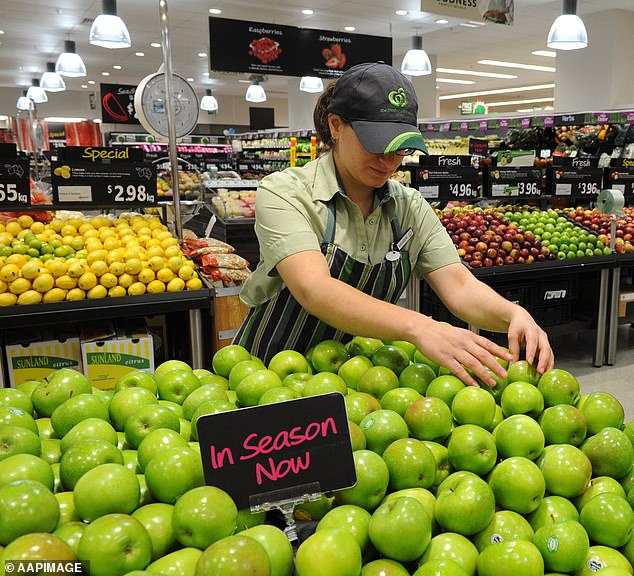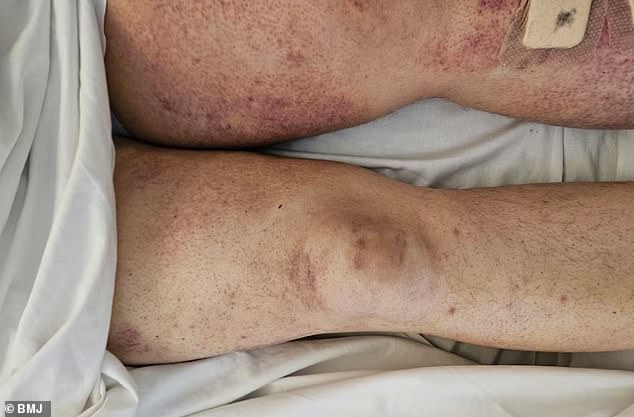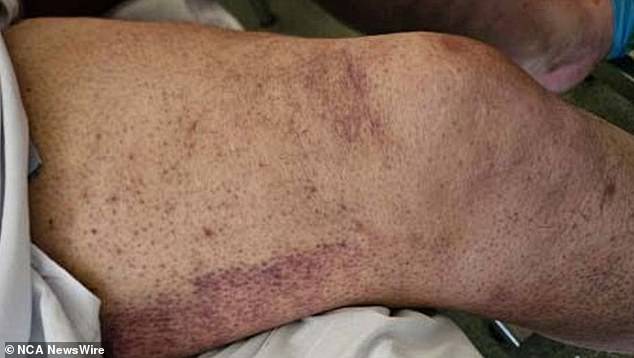Doctors have detected the rare disease scurvy in Australia, in what a medical journal has called a potential “cost of living” case.
Scurvy had been largely eradicated thanks to a healthy diet, but the economic crisis and gastric surgeries are causing it to return.
A middle-aged man from Western Australia recently presented at Perth’s Sir Charles Gairdner Hospital with the disease, the British Medical Journal reported.
The man, in his 50s, showed symptoms of a painful rash, blood in his urine and anemia and told doctors he sometimes “skipped meals” and “couldn’t afford” nutritional supplements.
“The test result was negative for inflammatory, autoimmune and blood disorders and scans revealed no evidence of internal bleeding,” the BMJ stated.
“His rash continued to spread while he was in hospital and further questioning revealed that he was short of money and neglected his diet, eating few fruits and vegetables.”
‘He said he sometimes skipped meals entirely. She had also stopped taking nutritional supplements prescribed to her after previous weight loss surgery because she said she could not afford them.
“Blood tests to assess his overall nutritional status indicated no detectable levels of vitamin C and very low levels of other key nutrients.”
A middle-aged man recently presented to Perth’s Sir Charles Gairdner Hospital with the rare disease scurvy. Her symptoms included a painful rash (pictured).

Scurvy is caused by a deficiency of vitamin C. Eating fresh fruits and vegetables can prevent the disease (file image)
“He was diagnosed with scurvy and treated daily with vitamin C (1000 mg), vitamin D3, folic acid and multivitamin supplements, after which his painful rash and other symptoms disappeared.”
Scurvy is caused by a vitamin C deficiency and is associated in popular culture with Renaissance and early modern sailors who could go months without fresh fruits or vegetables.
If left untreated, the disease can be fatal.
It is a rare disease in developed countries due to the wide availability of nutritious foods, and the BMJ authors said rising cost of living pressures could be leading to a resurgence of the disease.
But they also warned that there were other “risk factors” present in the patient, which could have triggered his illness.
Eight years earlier, the man had undergone gastric bypass surgery to lose weight, which is a risk factor.
“Our patient had multiple risk factors, namely poor eating habits, obesity, previous bariatric surgery, use of proton pump inhibitors, and low income,” the BMJ report states.

British Medical Journal authors said rising cost of living pressures could be causing a resurgence of scurvy (file image)
“His history of iron, vitamin D, and folate deficiencies were also clues to his underlying nutritional deficiency,” they conclude.
Other risk factors for scurvy include alcoholism, smoking, eating disorders, low family income, obesity, kidney dialysis, and medications that interfere with the absorption of vitamin C, such as steroids and those that slow the production of vitamin C. stomach acid.
BMJ said the prevalence of scurvy in the community was “unclear”.
The cost of living crisis that has hit Australia in recent years comes from a combination of rising interest rates, energy costs and broader inflationary pressures.
Supply chain disruptions caused by Covid and then the Ukraine War in 2022 caused sharp price increases in a variety of goods and services, prompting central banks to raise rates to control escalating inflation. .
Australians’ purchasing power has declined as a result of these pressures, although economic and employment growth has remained resilient.

